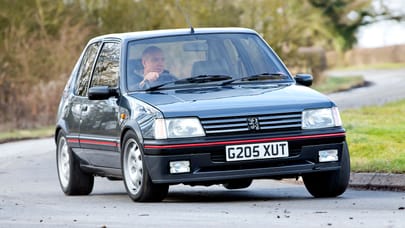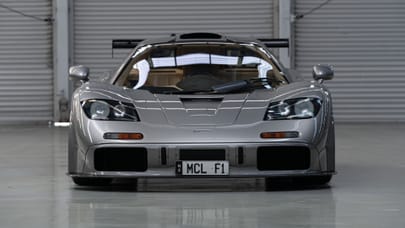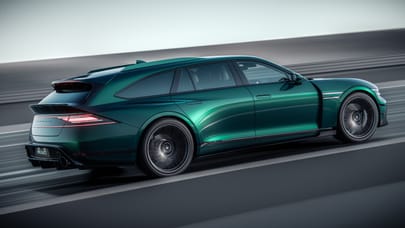

It's a sad day for car design - Sergio Pininfarina, president of Pininfarina from 1966, has died at his home in Turin. He was the son of the company's founder, Batista Farina, and was serving as honorary chairman of the company at the time of his death.
After graduating in mechanical engineering from the Polytechnic of Torino in 1950, Sergio began his career in the family business, Carrozzeria Pinin Farina. By 1960 he was General Manager, then in 1961 became Managing Director. Come 1966, and after his father's death, he took over chairmanship of the company.
During his stewardship, Sergio oversaw the design of some of the world's most iconic sports cars, including the Ferrari Enzo and Maserati Quattroporte. Which probably explains why his award cabinet's almost as heavy as his CV - he's won more than 20 major design awards and received four honorary degrees in recognition of his contribution to design.
Now click forth for our humble homageAdvertisement - Page continues below
OK, so it's no Ferrari Enzo, but the big Pug was awarded 1996 and 2001 Caravan Club Towcar of the Year as well as Semperit Irish Car of the Year for 1997.
The coupe was the only model Pininfarina got involved with, and it was designed and manufactured by the Italian studio. You could chose a 2.0-litre four-pot, a 2.9-litre V6, or a 2.2 L HDi diesel engine.
The 288 was only the second car in Ferrari's history to have the precious GEE TEA OH stamped on the back. Built as a homologation special, only 279 production cars were made and it took design cues from the Pininfarina 308 GTB concept from the 1977 Geneva Auto Salon.
Advertisement - Page continues below
Fresh from completing the legendary Testerossa, Sergio set to work on the Alfa 164. It was the first Alfa to make use of computers instead of pure guestimation, which made it rigid but light and actually quite a good car.

2004 saw the launch of the 612 Scaglietti, Ferrari's successor to the long-standing executive flagship - the 456. And it's one of the only Ferraris in history capable of carrying four actual, real-sized humans.
From a design perspective, Pininfarina wanted to pay homage to the custom 1954 Ferrari 375 MM through the 612's side scallops and headlights.
This massive four-seat ostentationist debuted in March 1995 and was based on a Continental R, which was launched in 1991. As well as being really quite brash, it ranked as the fourth most fuel consuming car on sale in the UK.

Named after Ferrari's founder, it was built to celebrate the manufacturer's first formula one title of the new millennium.
Initially announced at the 2002 Paris Motor Show, it had a limited production run of 349 cars, each one costing an eye-watering $659,330. All of the cars were pre-sold before production began.Advertisement - Page continues below
With its disc brakes and twin-cam engine, this very pretty little car was one of the most advanced sports saloons of the period. It also spawned what might just be the most produced bodystyle in the history of EVER. That's largely thanks to Lada, which based its ubiquitous 2107 on the peerless outline (not before making it considerably more rubbish)

The partnership between Maserati and Pininfarina hit a sweet spot when Jason Castriotta penned the awesome Maserati GranTurismo. With an aggressive front end, it came with a 4.2-liter V8, derived from the Ferrari-designed engine in the Quattroporte to go with that gaping front grille.
Advertisement - Page continues below
This started life as an Enzo Ferrari, but its owner, film director and stock exchange magnate James Glickenhaus, preferred the styling of Ferrari's 1960s P Series competition cars. He asked Pininfarina to resculpt it so it looked like the old racers, which resulted in this - the one-off $4m P4/5.

It's up there with mullets and pastel-coloured double-breasted jackets as a true icon of the eighties, though the Testarossa's aged with far more dignity.
The engineering's just as pretty as the ‘Farina-penned coachwork - it's got a 4.9-litre mid-mounted flat-12 engine, each cylinder's got four valves (making 48 in total), and it's lubricated by a dry sump system. Nice.
As well the handsome outline, this thing has 47 per cent front/53 per cent rear weight distribution, which means it's pretty nimble despite its four-door heft.
Jeremy's not a big fan though....
The F40 is one of the legendary shapes in the history of car design. Sloping nose at the front, big wing at the back and a twin-turbo V8 shielded by Perspex in the middle. Thank you, Pininfarina.
More from Top Gear
Trending this week
- Car Review
Hyundai Kona
- Long Term Review
Time's up with the Mini Countryman: here's the six-month verdict
- Top Gear's Top 9
Nine dreadful bits of 'homeware' made by carmakers







